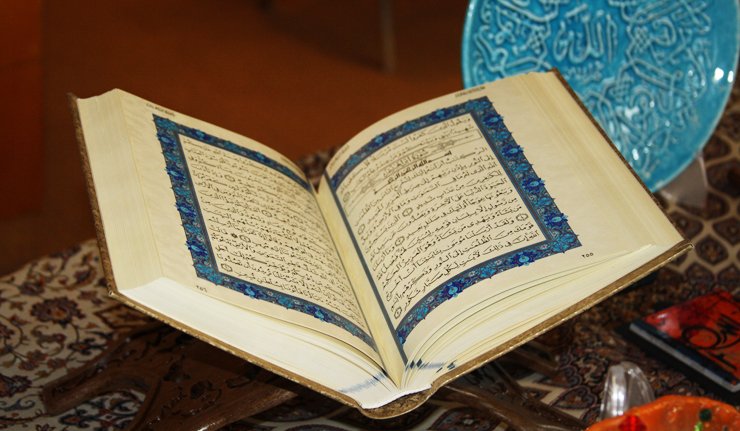أنثروبولوجيا الموسم: الطقوس وتجليات المقدس في موسم قبيلة كندر أنموذجا
Anthropology of the season: rituals and manifestations of the sacred in the season of the Kandar tribe as an example

اعداد :
- محمد كندري الروضي: طالب دكتوراه، شعبة علم الاجتماع، كلية الآداب والعلوم الإنسانية ظهر مهراز، جامعة سيدي محمد بن عبد الله، فاس. أستاذ التعليم الابتدائي.
- محمد وحدو: دكتوراه علم الاجتماع، كلية العلوم الإنسانية والاجتماعية بجامعة ابن طفيل القنيطرة، وله عدة مقالات منشورة في مجالات وطنية ودولية وشارك في عدة ندوات وطنية ودولية.
المركز الديمقراطي العربي : –
- مجلة الدراسات الأفريقية وحوض النيل : العدد السابع والعشرون أيلول – سبتمبر ,مجلد 07 مجلة دورية علمية محكمة تصدر عن #المركز_الديمقراطي_العربي ألمانيا – برلين .
-
تُعنى المجلة بالدراسات والبحوث والأوراق البحثية عمومًا في مجالات العلوم السياسية والعلاقات الدولية وكافة القضايا المتعلقة بالقارة الأفريقية ودول حوض النيل.
Journal of African Studies and the Nile Basin
للأطلاع على البحث “pdf” من خلال الرابط المرفق :-
الملخص:
يروم هذا المقال البحث في تمظهرات وتجليات المقدس الأوليائي والضرائحي وعلاقته بالمواسم باعتبارها متنا مهما من متون الثقافة الشعبية والأنثروبولوجيا، إذ تمّكن المواسم من فهم دينامية الحقل الديني وتفاعلاته مع الحقول الأخرى، لذلك سنحاول ربط المقدس كمفهوم زئبقي مع المجال والمجتمع، ومع التاريخ أيضا، لنفهم- ولو قليلا-، العلاقات التي أنتجها سجل المقدس في قبيلة كندر. واعتمدنا في ذلك على المعطيات الميدانية التي تؤكد اندماج المقدس بالمجال، وإعادة انتاجه بصفة دورية. وقد تناولنا المقدس في علاقته بالموسم باعتبار هذا الأخير فضاء غنيا بالرموز التي تؤشر على وقائع ثقافية مهمة، وتجدد أواصر القرابة بين الناس، فالمواسم لا تمكننا من معرفة علاقات القوة والمعنى فقط، وإنما تأخذنا إلى أبعد من ذلك، إنها تؤسس لتفاعل الجماعات البشرية ولعلاقات البركة، ناهيك عن اندماجها بمواسم الحصاد والحرث، هذا ولا يمكن أن نعزل بصيغة من الصيغ الطبيعة عن الثقافة، والمقدس عن المجال.
يقتضي الانشغال بالموسم التفكير في التفكير، بمعنى أنه لا يجب الاقتصار على قراءة ما وراء المحطات والظاهر، فالموسم غمرة يعبر عن نهاية الموسم الفلاحي، حيث أنه زمان تنظيمه يأتي في فترة البين والبين، بين الحصاد والحرث، ومن هنا فتقديم القرابين هو ظاهرة بشرية غارقة في القدم، وبما أنها كذلك، فهي تحتوي وتحمل رموزا ثقافية كثيرة، ويتم تفسير غالب هذه الرموز على أنها حنين للتاريخ البشري الأول، فأنماط تبديد العنف عبر اتخذت كثيرا من الأشكال من بينها تقديم القرابين.
إن الخوف من الطبيعة أرسى نظام المقدس، لهذا نجد حضور تجليات متعددة للمقدس في موسم غمرة، فالجلد والدم، ووضع الحزام على قرون العجل، واستعمال الألوان، واعتبار العجل عروسا، ونهل الخصوبة، والزيارة وإشعال الشموع، كلها رموز تؤسس لتجليات البركة ولمحاولة نهلها من المجال المقدس، وتحاول التماهي مع المقدس المتعالي.
Abstract
This article aims to investigate the manifestations and manifestations of the primal and shrine sacred and its relationship to the seasons as an important body of popular culture and anthropology, as the seasons enable us to understand the dynamism of the religious field and its interactions with other fields. Therefore, we will try to link the sacred as a mercurial concept with the field and society, and with history as well, to understand – Even if only a little -, the relationships produced by the sacred record in the Kandar tribe. In doing so, we relied on field data that confirm the integration of the sacred into the field, and its reproduction on a periodic basis. We have discussed the sacred in its relationship to the season, considering that the latter is a space rich in symbols that indicate important cultural events and renew the bonds of kinship between people.
The seasons not only enable us to know the relationships of power and meaning, but they take us even further. They establish the interaction of human groups and the relationships of blessing, not to mention their integration with the seasons of harvest and plowing. We cannot, in any way, isolate nature from culture, and the sacred from the field.
Preoccupation with the season requires thinking about thinking, meaning that one should not limit oneself to reading what is behind the stations and the apparent, as the season is an immersion that expresses the end of the agricultural season, as the time of its organization comes in the period between the harvest and the plowing, and from here offering sacrifices is a human phenomenon immersed in Antiquity, as it is, contains and carries many cultural symbols, and most of these symbols are interpreted as nostalgia for early human history. The patterns of dissipating violence through it took many forms, including offering sacrifices.
The fear of nature established the system of the sacred, and for this reason we find the presence of multiple manifestations of the sacred in an overwhelming season. The skin and blood, placing the belt on the calf’s horns, the use of colors, considering the calf as a bride, bringing about fertility, visiting, and lighting candles, are all symbols that establish the manifestations of blessing and the attempt to obtain it from the field. The sacred, and tries to identify with the sacred and transcendent.




